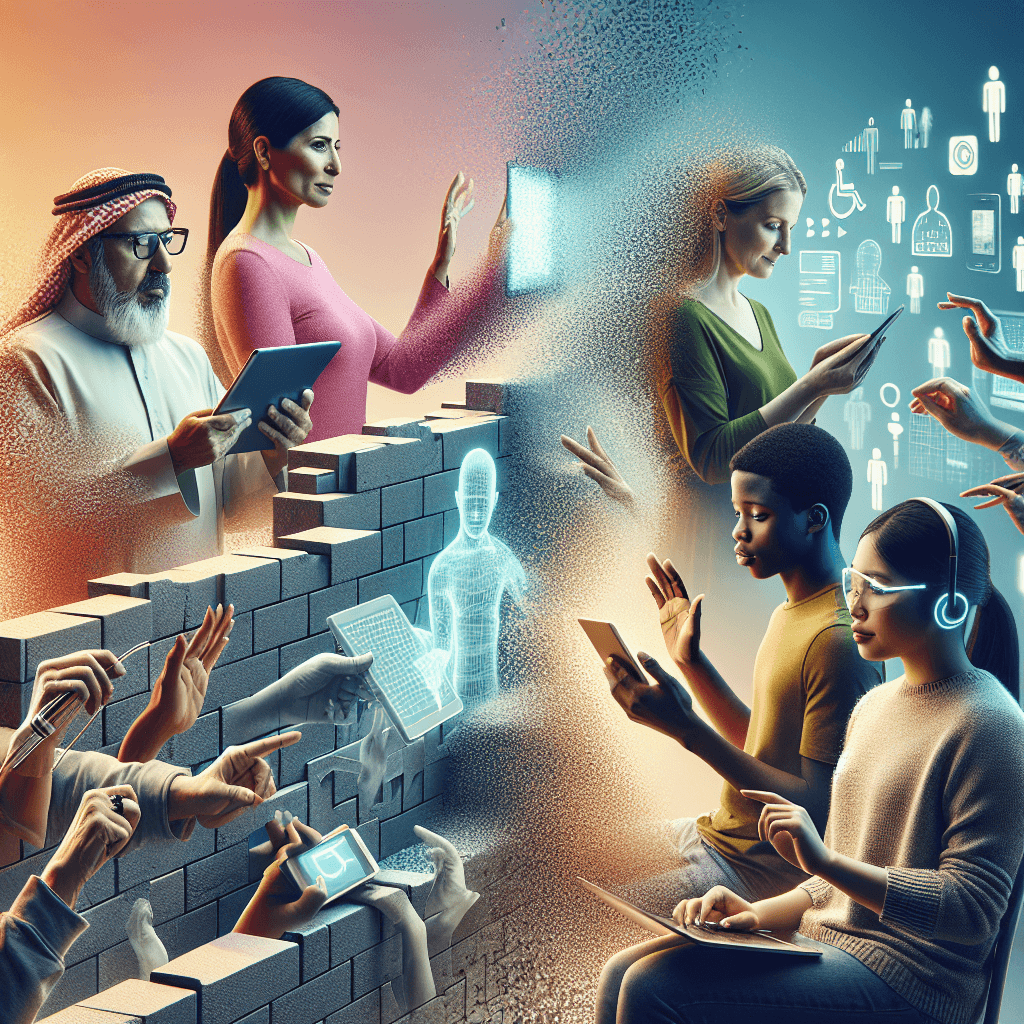Tech Accessibility: Empowering Inclusion for Everyone.
Technology, in its relentless march forward, has the power to either bridge or widen the chasm of inequality. When harnessed for good, it becomes a powerful tool for inclusion, breaking down barriers and empowering individuals across geographical boundaries and walks of life. This is particularly crucial in the realm of education, where access to knowledge and opportunity should be a fundamental right, not a privilege.
The Promise of Tech Accessibility
Imagine a world where learning is not confined to the walls of a classroom, where geographical location or physical ability no longer dictates one's access to quality education. This is the promise of tech accessibility – a future where technology empowers individuals with diverse needs and learning styles to thrive in an increasingly digital world.
Breaking Down the Barriers
For too long, traditional education models have presented obstacles for individuals with disabilities. The lack of personalized learning tools, inaccessible content formats, and societal stigmas have created a significant digital divide.
Emerging technologies hold the key to dismantling these barriers:
Assistive Technologies: From screen readers and text-to-speech software to adaptive keyboards and eye-tracking devices, assistive technologies empower individuals with visual, auditory, physical, and cognitive disabilities to interact with digital content and learning platforms.
Personalized Learning Paths: AI-powered learning platforms can analyze individual learning patterns and preferences to create customized learning paths. This ensures that learners with diverse needs can progress at their own pace, focusing on areas where they need additional support.
Universal Design for Learning (UDL): UDL principles advocate for creating learning environments and resources that cater to a wide range of learners from the outset. Digital platforms are uniquely positioned to implement UDL guidelines by offering multiple means of engagement, representation, and action and expression.
The Power of Blockchain for Secure and Transparent Credentials
In an increasingly digital world, verifying the authenticity of educational credentials is paramount. Blockchain technology offers a tamper-proof and transparent solution, ensuring the security and credibility of digital certificates and diplomas.
Benefits for Learners and Educators:
- Enhanced Accessibility: Learners with disabilities gain access to a wealth of educational resources and opportunities, empowering them to pursue their academic and professional aspirations.
- Personalized Learning Experiences: Tailored learning experiences cater to individual needs, resulting in improved engagement, motivation, and academic outcomes.
- Increased Equity and Inclusion: Technology helps to level the playing field, providing equal access to quality education for all learners, regardless of their background or abilities.
- Future-Proof Skills: Mastering digital literacy skills prepares individuals for success in the 21st-century workforce, where technology plays an increasingly integral role.
Embracing a Future of Inclusive Education
As we venture further into the digital age, it is our collective responsibility to ensure that technology serves as a force for good, empowering all individuals to reach their full potential. By embracing tech accessibility, promoting inclusive design practices, and leveraging the power of emerging technologies, we can create a future where education is truly a right, not a privilege.
Want to explore courses and resources that embrace innovative learning solutions? Visit 01TEK and embark on your personalized learning journey today!
The road to success is always under construction.
Arnold Palmer



